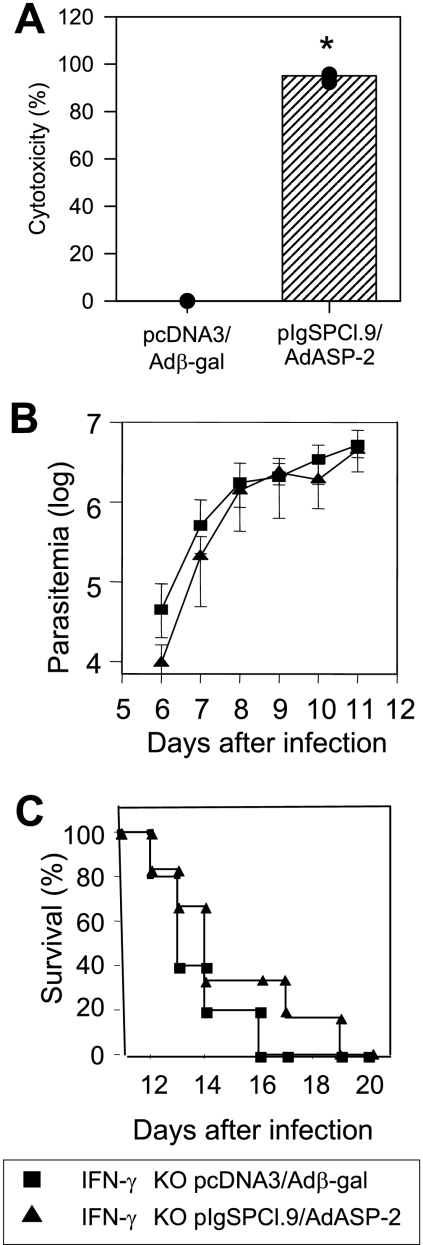FIG. 7.
In vivo cytotoxic activity against target cells coated with peptides representing the CD8 epitope and trypomastigote-induced parasitemia and mortality of IFN-γ KO mice immunized with heterologous prime-boost regimen. IFN-γ KO mice were immunized as described in the legend of Fig. 3. (A) Two weeks after the final immunizing dose, mice were injected with splenic syngeneic cells labeled with CFSE and coated with the peptide VNHRFTLV. The specific in vivo cytotoxic activity was estimated after 20 h as described in Materials and Methods. The results are expressed as medians (bars) and each individual mouse (dots, n = 3). An asterisk denotes significantly higher (P < 0.01) specific in vivo cytotoxic activity of ASP-2-immunized IFN-γ KO mice than control pcDNA-3/Adβ-gal-injected mice. (B) Two weeks after the final immunizing dose, mice were challenged i.p. with 104 bloodstream trypomastigotes. The parasitemia for each mouse group is represented as mean ± the SD (n = 6). (C) The graph shows the Kaplan-Meier curves for survival of the mice groups immunized and challenged as described above (n = 6). These experiments were performed twice with similar results.

